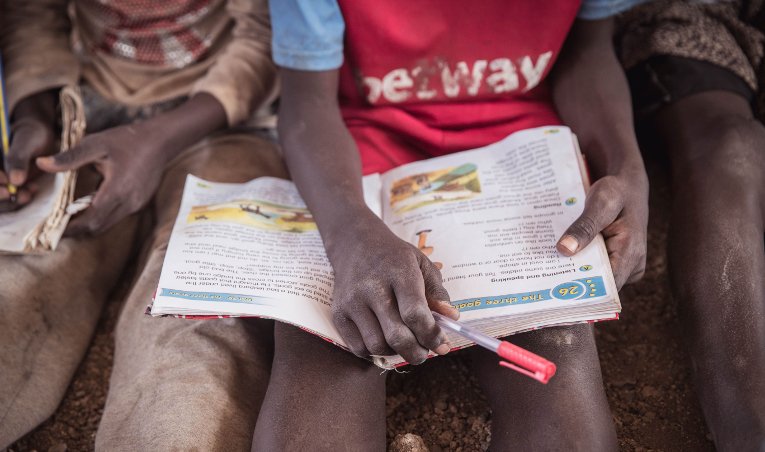Most of the world’s school-aged children cannot go to school due to the coronavirus, and it is hard to predict the consequences
For children and young people, school is much more than attending classes. Schools provide safety and protection from abuse and violence.
The coronavirus has created an unprecedented situation in which most of the world’s children and young people are out of school. According to UNESCO, school closures affect already 91 percent of the world’s pupils.
Out of these 1.54 billion children and young people, just under half, 743 million, are girls. More than 111 million of these girls live in the least developed countries, where having access to education was difficult even before the crisis.
In addition, nine out of ten of the 1.8 billion young people in the world live in developing countries, where opportunities for long-distance education are scarce.
When schools close, children and young people no longer spend their days with their peers or under the supervision of their teachers. Without going to school, many are also left without school meals and healthcare.
No one knows how long the pandemic will continue. Instead of weeks, it is likely a matter of months.
What did we learn from Ebola?
During the Ebola epidemic, schools in West Africa remained closed for 6–8 months. During this time, the number of teen pregnancies went up, in parts of Sierra Leone by up to 65 percent. Countries afflicted by the epidemic also saw increases in domestic violence and maternal mortality.
Several international studies have looked into the experiences of children and young people during Ebola. When children were interviewed for the studies, a direct link between schools closing and an increase in child labour was found. The children described having to take more responsibility for providing a livelihood at home once their families’ means of subsistence weakened.
When the children and young people were asked what they were most worried about during the Ebola epidemic, their primary concern turned out to be schools closing and the effects this would have on their future. The children were afraid to go back to school because they were worried about Ebola still spreading in them. The same risk exists in the current situation with the coronavirus.
Long-distance studying was rare in Liberia, Sierra Leone and Guinea, which where the countries that suffered the most from Ebola. Just 30–40 percent of children said they studied at home during the epidemic. Their studies mainly consisted of going through old notes. Most parents cannot read or write, so they were unable to support their children in their long-distance studies.

Schools can prepare for distance learning by printing learning materials for students to take home.
In the regions affected by Ebola, some long-distance studying was organised over the radio. However, this proved ineffective at times. Not all parents could afford to buy a radio or the batteries for it, and the restrictions around gatherings made it impossible for several children in the neighbourhood to gather around one radio.
School closures due to the coronavirus came as a surprise in many countries, and there was no time to make preparations. The lower the level of income in a country, the harder it is to organise long-distance learning.
Learning must continue even though schools close
Long-distance education can be of high quality as long as it is carefully prepared. In low-income countries, all methods of long-distance learning that require using the internet are difficult for learners to reach, and are often expensive and complicated to use.
However, it is important to support learning at home in order to keep the number of school dropouts as low as possible. Radio broadcasts remain the most cost-effective long-distance education solution that reaches the biggest possible number of children and young people. Keeping in mind the lessons learned from the time of Ebola, it is important to make sure as many families as possible have a radio at home. Finn Church Aid (FCA) distributes solar-powered radios to families, in order to give the children access to long-distance education.
FCA has made cooperation agreements with radio stations in the North Kenyan refugee settlement area. Ideally, the pedagogical expertise of teachers is employed in preparing the radio lessons, and teaching is paced so that education is directed at different age groups at different times.
Maintaining a connection with school is important in order to ensure schooling to continue after the crisis is over. The longer children and young people are out of school, the more likely it is that they will not return.
WhatsApp to assist in training teachers
During the state of emergency, it is important to stay connected with not only the pupils but also the teachers. This helps prepare for the reopening of schools once the crisis is over.
In Bangladesh, FCA trains teachers during the pandemic via WhatsApp. Long-distance education enables teachers to develop their expertise, stay motivated, and keep in touch with one another.
WhatsApp is also used to share information about how to stop the virus from spreading. The teachers can then share this information further in their own communities.
It is important to start looking forward and prepare for the children and youth to return to school. Once the schools have re-opened, it may be necessary to speed up teaching and revise learning content, as well as offer psychosocial support for the learners.
Education, even in the form of long-distance, gives hope of a better future during crisis, which is especially important for children and young people. Now, learning – as well as hand-washing – must continue.
Minna Peltola
Senior Education Specialist
Elina Kostiainen
Communications Specialist
Translation: Leena Vuolteenaho
Photos: Jari Kivelä
Read more: New COVID -19 advocacy brief Learning must go on by Finn Church Aid, Unicef, Save the Children UK and partners.